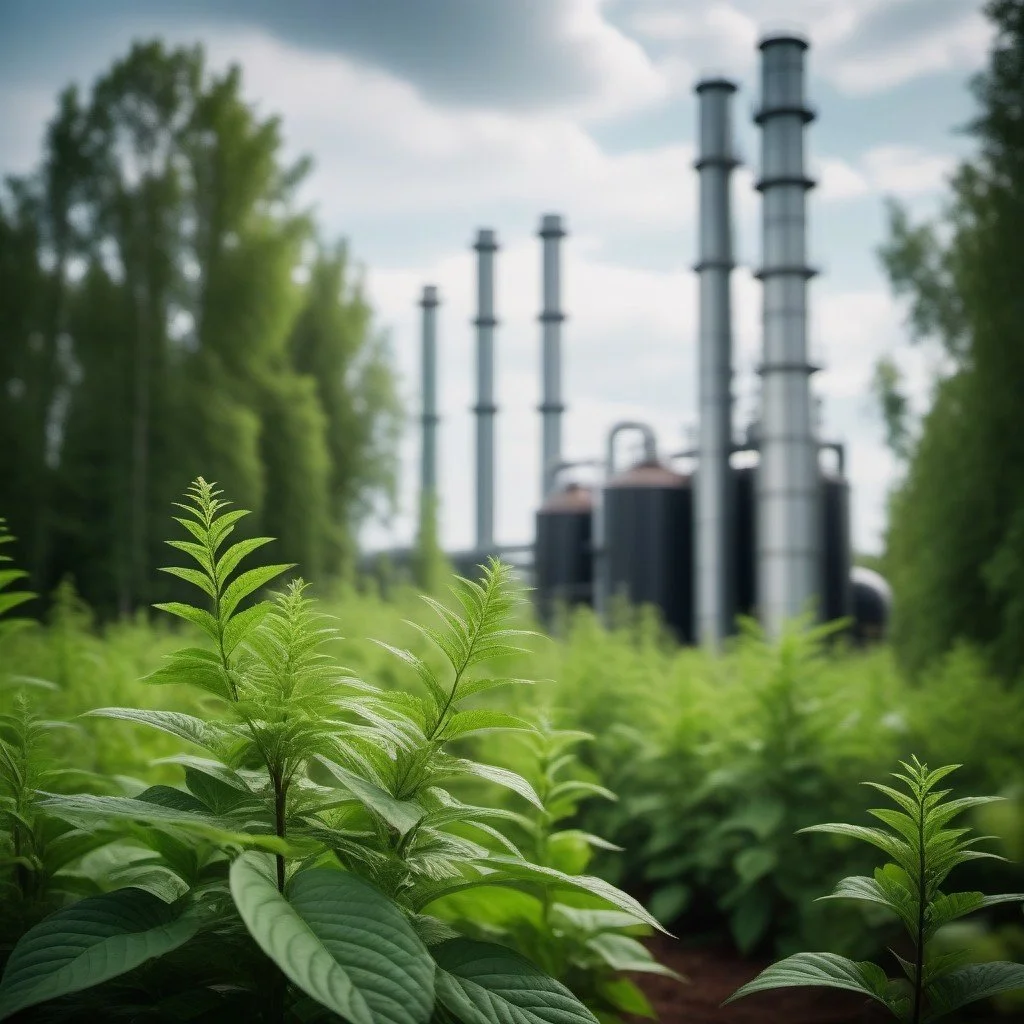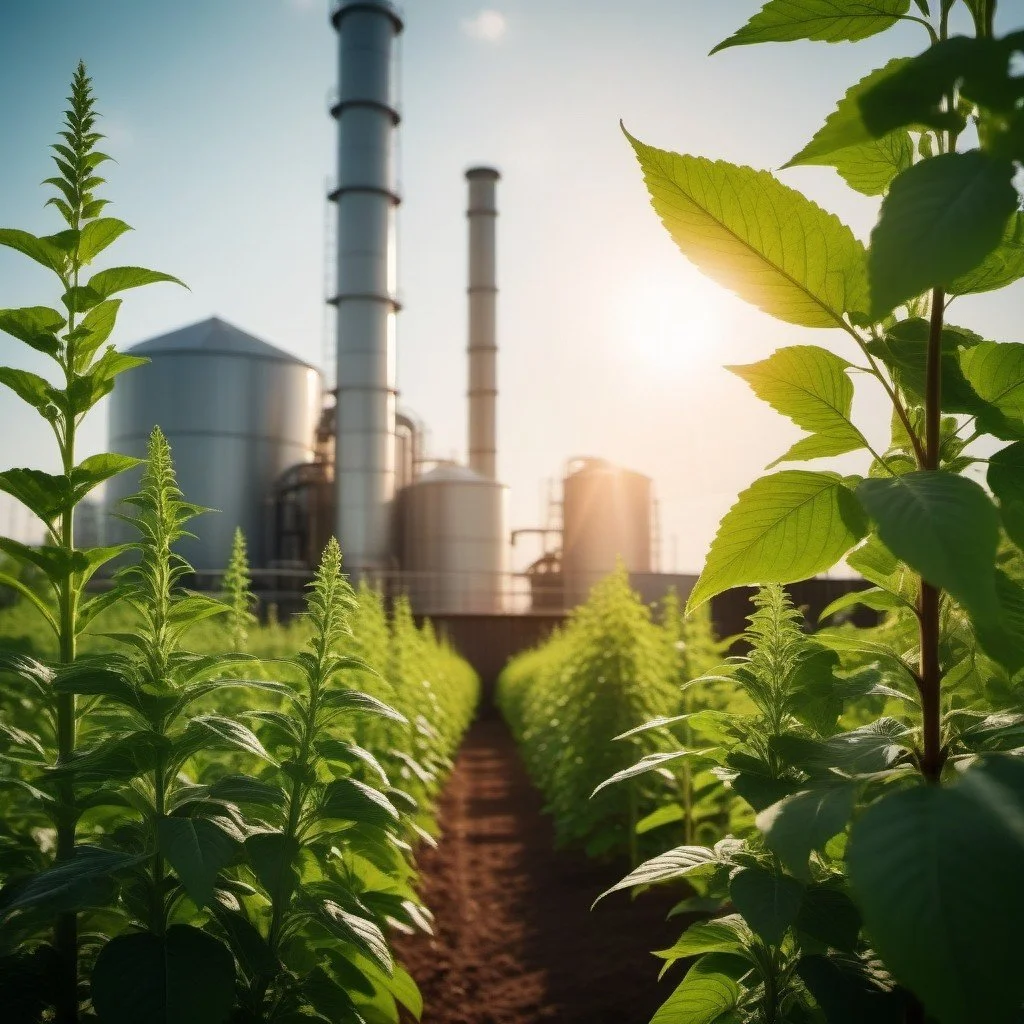
Capture Today, Breathe Tomorrow: Biomass Solutions for Carbon Storage
Grow Green, Store Clean
Our vision is to pioneer a sustainable future where the balance between human activity and the natural world is restored and maintained through innovative Biomass Carbon Removal and Storage solutions. We aim to lead the transition towards a carbon-neutral global economy, leveraging the power of biomass to capture and store carbon efficiently, reduce greenhouse gas emissions, and support ecological restoration.
Nature’s Answer to Carbon Capture
By harnessing the synergy between technology and nature, we endeavor to protect and enrich our planet for future generations, ensuring that every community thrives in harmony with the environment. Together, we are building a greener, cleaner world where energy is renewable, resources are regenerated, and the air we breathe is pure.
Our Approach
Biomass
Biomass refers to organic materials, such as plants, agricultural residues, wood, and algae, that can be used as a renewable energy source. Unlike fossil fuels, biomass is part of the Earth's natural carbon cycle; when it grows, it absorbs carbon dioxide (CO₂) from the atmosphere, and when it is used for energy, it releases that carbon back, creating a nearly balanced cycle.
Gasification
Biomass gasification is a thermochemical process that converts organic materials, such as wood, agricultural residues, or energy crops, into a combustible gas mixture, commonly referred to as syngas. This process involves heating the biomass in a controlled environment with a limited supply of oxygen, which prevents complete combustion. Instead, the biomass partially oxidizes, producing a gas that contains hydrogen, carbon monoxide, carbon dioxide, methane, and nitrogen.
Syngas
The syngas produced can be used as a fuel for generating electricity or as a feedstock for producing biofuels and chemicals. Biomass gasification offers a promising way to utilize renewable resources efficiently, reducing greenhouse gas emissions and providing a cleaner, sustainable alternative to fossil fuels.
Carbon Capturing
Carbon capture plays a pivotal role in achieving net-negative carbon emissions. During gasification, biomass is transformed into syngas while simultaneously capturing carbon dioxide (CO₂). The captured CO₂ is stored in biochar, which sequesters the carbon for more than 1,000 years. This stable form of carbon sequestration not only prevents the release of CO₂ into the atmosphere but also contributes significantly to long-term carbon management and climate mitigation strategies, making biomass gasification a key player in sustainable energy solutions.
Let's work together towards a sustainable and greener tomorrow.
Based in Berlin, Germany, we are a leader in renewable energy innovations, specializing in advanced biomass gasification systems. Our technology focuses on converting biomass into clean syngas using modular, customizable gasifiers housed in shipping containers for easy deployment and scalability. We are committed to reducing atmospheric CO₂ levels and providing sustainable energy solutions that support a carbon-neutral future. Our approach combines technological excellence with environmental stewardship, aimed at fostering a greener planet.
Case Studies
Mobile biomass gasification systems are revolutionizing several key industries by providing flexible, sustainable, and efficient energy solutions. This case study explores how mobile biomass gasification is transforming the agriculture, forestry, waste management, energy production, and manufacturing sectors.
-
Challenge: The agriculture industry generates significant biomass waste from crops and livestock, leading to disposal issues and environmental concerns.
Solution: Mobile biomass gasification systems convert this waste into renewable energy and biochar. Biochar enhances soil health, boosts crop yields, and sequesters carbon, while the generated energy powers agricultural operations.
Impact: Farmers benefit from reduced waste disposal costs, improved soil fertility, and lower energy expenses, promoting a sustainable agricultural model.
-
Challenge: Forest residues and wood waste pose a disposal challenge and increase wildfire risks.
Solution: Mobile biomass gasification systems convert forestry waste into energy, providing a renewable power source for forest operations and nearby communities.
Impact: This approach supports sustainable forest management, reduces wildfire risks, and generates additional revenue from renewable energy production.
-
Challenge: Municipalities face the challenge of managing large volumes of organic and municipal solid waste, often ending up in landfills.
Solution: Mobile biomass gasification systems process waste on-site, converting it into energy and reducing landfill use and greenhouse gas emissions.
Impact: Waste management becomes more efficient, environmentally friendly, and cost-effective, supporting circular economy initiatives.
-
Challenge: Remote and rural areas often lack access to reliable energy sources, relying on expensive and polluting diesel generators.
Solution: Mobile biomass gasification systems provide off-grid renewable energy solutions, utilizing locally available biomass resources.
Impact: Communities gain access to clean, reliable energy, reducing dependence on fossil fuels and enhancing energy security.
-
Challenge: Manufacturing plants consume large amounts of energy, contributing to high operational costs and carbon emissions.
Solution: Mobile biomass gasification systems supply on-site renewable energy and heat for industrial processes, lowering energy costs and carbon footprints.
Impact: Manufacturers achieve significant cost savings, improve sustainability, and comply with increasingly stringent environmental regulations.

